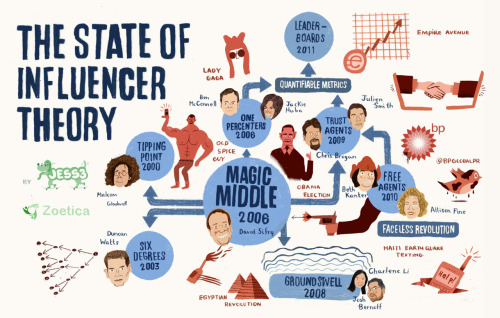| Lost in Thailand/Tai Jiong (Comedy) The Most Profitable Film in Chinese Film History |
So far, I have contributed a whole series of blogs that dichotomy and explicate the miraculous marketing of the film Lost in Thailand/Tai Jiong. Turning a $5 million road comedy into a $200 million-dollar-box-office blockbuster, the production and distribution company of this film - Enlight Media Group - used all the communication techniques Malcolm Gladwell (his personal website: http://www.gladwell.com/) explained in his book The Tipping Point - one of the greatest sociology and marketing books.
 |
| The Tipping Point A sociology and marketing classics by Malcolm Gladwell |
I have sticked to his major theory Law of the Few - among his three rules of tipping - to analyze the marketing process of Lost in Thailand. There are many other elements such as the stickiness factor in both the film and their advertisements, the customization for context when producing the film and marketing plan, the advertising method, content, and result, the movie showtime arrangement and luck that are very worth for analysis but I believe it's been a good amount of case study for this film already. Yet a review and summary on the marketing mechanism would be helpful.
 |
| Many more marketing theories that can help explain the Lost In Thailand phenomenon |
STEP 1: Manual Distribution By Creating Advertising Contents
Setting out the 80 distributors as primary connectors to connect the traditional mass media mavens across the nation through 1200 TV channels’ top programs, 2000 top box office cinemas, public transportations and stations/airports, college campuses, pharmacies, hospitals in 120 cities;
STEP 2: Expanding To Online Media
Promoting online by collaboration with the big new media mavens including largest online communities, largest online TV broadcast duopolies, largest video-sharing oligopolies, online payment monopoly, largest travel agent (relevant to their theme), and the social networks Renren (The Chinese Facebook except that users are exclusively only students) and Weibo (The Chinese Twitter).
First step starts the mechanism, and the second step – by the nature of interaction – triggers the mechanism and offers the platform. Both two steps are a man-made “Law of the Few” phenomenon, and the third step, uncontrollable by anyone, was that after the movie hit the screen.
STEP 3: Converting Public Into Advertisers
All these channels and platforms gradually fermented all discussions and word-of-mouth communications – turning the public – the target audience – into the secondary connectors, mavens, and salesmen. |
| With each positive impression the public picks up, they spread the words further |
 |
| And with internet plus the attention hungers, the words can spread much further than it ever could |
STEP 4: Continuous Marketing
Only with the successful third step could it become a real epidemic, and Enlight Media kept magnifying these feedback and reactions from the audience, enhancing the Law of the Few, by continuous marketing – which was the fourth step, forming a virtuous circle and keeping the hit hitting. Reaching certain points one becomes “too big to fail” where others – such as journalism – start to actively participate in, further snowballing and enhancing the virtuous circle. |
| With restless further advertisements, the studio kept the fire on; with the help of internet, speed and volume of communication grows exponentially with each more "advertiser" |
The whole marketing campaign took about five million dollars – slightly more than the production cost. A 1:1 production cost versus marketing cost spending distribution is a common model for Hollywood films, but it is the first case in China. Sometimes the sincerest complement needs only one word, like: well-spent. Or maybe one picture.



No comments:
Post a Comment